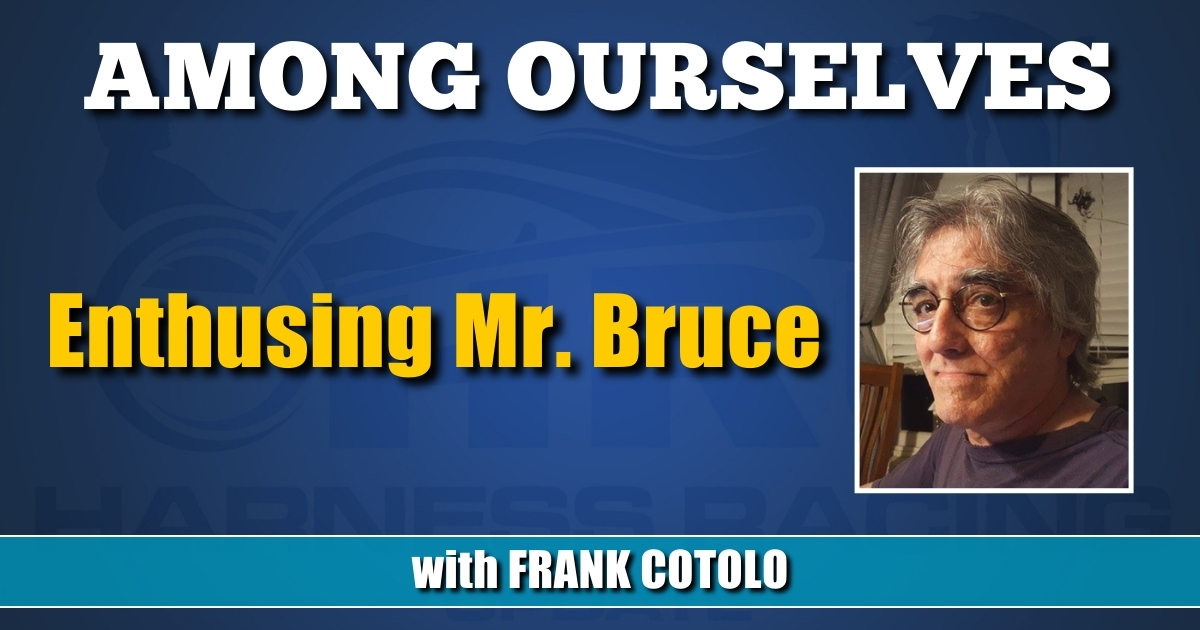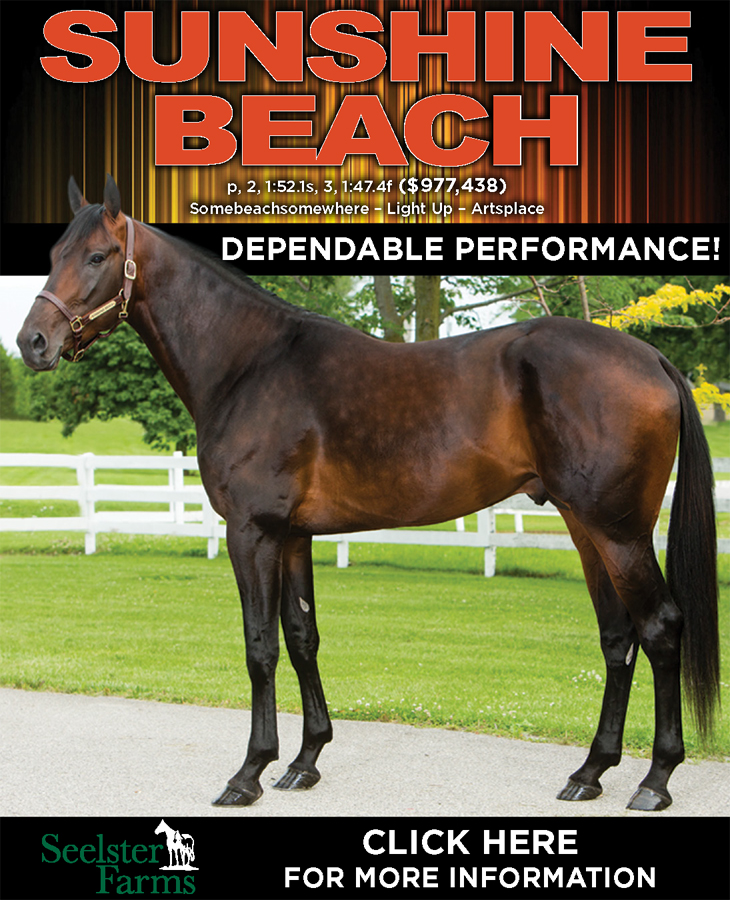

Enthusing Mr. Bruce
A study in harness-fan recruitment, Part 1
by Frank Cotolo
Mr. Bruce crumpled the Daily Racing Form and pushed it into my chest and said, “I can’t make anything of this. Give me the harness program.”
“It’s in the back of that Racing Form.”
Mr. Bruce was used to the chapbook-style Western Harness Racing (WHR) programs that were sold only at Hollywood Park. I hooked him on that format because it was I who took Mr. Bruce to the harness races for the first time in his life. I was used to the West Coast Racing Form’s harness past performances since moving to Hollywood from my less-than-luxurious flat in Bel-Air. In Hollywood, I bought a Form at a local street newsstand to handicap the night races I would attend. The official program was only available at the track.
I was working regularly as a writer when I met Mr. Bruce. He lived nearby my one-bedroom apartment off Highland Boulevard. He was transposed from Queens, NY, and like me, he moved to Hollywood searching for a career in show business; that quirk of camaraderie triggered a natural friendship. Mr. Bruce was like most East Coast transplants hoping to make a living in “the business.” Most of them I met around that time had something else in common; they were unacquainted with harness racing.
One night, I asked Mr. Bruce to come with me to Hollywood Park, just for the hell of it.
“You don’t have to bet,” I said. “Just watch it up close. It’s cool and the place is never crowded.”
He liked the not-crowded part because he was germophobic. A person sneezing 10 feet away caused Mr. Bruce to put his hand over his mouth and nostrils while walking another 10 feet away. He had nothing better to do, so he got into my Honda with an open mind about a new experience.
I drove us south on LaBrea Boulevard to the point where the urban scenery was thick with a Bukowskian [sic] atmosphere. I made a left on Prairie Boulevard to the parking lot. “Plenty of spaces,” Mr. Bruce said. We strolled to pay for grandstand admission and then to buy programs. We found a spot to hang on the apron as it was dressed for dusk. Long shadow stripes painted the backstretch as pacers and trotters scored.
“This is a mile track,” I said, “and every race is a mile race. So, it’s best not to watch races at track level, you know?”
Mr. Bruce knew that without any knowledge of racetracks. He studied film in New York and came west to be a film maker. He had an eye for scenes and angles and knew a litany of filming terms. He understood aspect ratio in photography and F-stops and all the rest of that technical movie-making stuff. We watched races on the apron at the finish line and from as far up the stretch as we could stand and from the grandstand seats at various spots and on TV monitors indoors where grandstand betting took place.
Once he ran out of brain film, so to speak, he asked me some questions about this and that and equines and horsemen and then I had a litany of terms for him. Especially when it came to betting. Like all beginners he had a timid approach to gambling on horses. He made one bet; two dollars to show on a horse that won. He got back his two dollars with 20 cents more while I collected the same per cent from a $10 win bet. Mr. Bruce’s interest was afoot.
The WHR meet had a good deal of dates left before the thoroughbreds took back their historic landscape, so I gave Mr. Bruce the only book I had at the time about betting horses: Beating the Harness Races by Aaron Bernstein (1976, Arco Pub. Co., 127 pps, 11.2 ounces, soft cover).
It was a rudimentary text but perfect to expand a novice’s understanding of the sport (customer reviews were 4 1/2 stars out of 5). Mr. Bruce engaged with the Bernstein book more than I thought possible. I admitted I had no idea about Bernstein’s prowess concerning the sport but Mr. Bruce, took it seriously. He learned the author’s speed-rating system — something I did not calculate when handicapping — and before long he was betting to win.
Mr. Bruce’s style of doing anything insisted upon precision. Aside from his meticulous approach and technical appreciation for filmmaking, he was an excellent carpenter (he gifted me with hand-made shelves for a kitchen) and he was a neat-nik as well as an avid reader of classic literature. He could appreciate and dissect the few moments of comedic brilliance in a Jerry Lewis movie and explain the films of R.W. Fassbinder with finesse.
And in 1978 I turned him into a harness racing fan.
To be continued.














